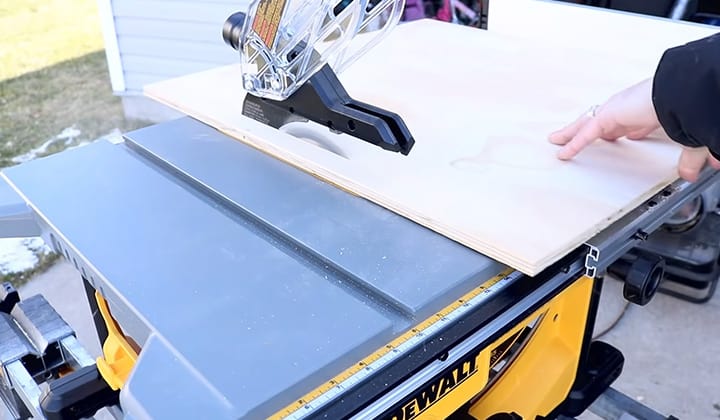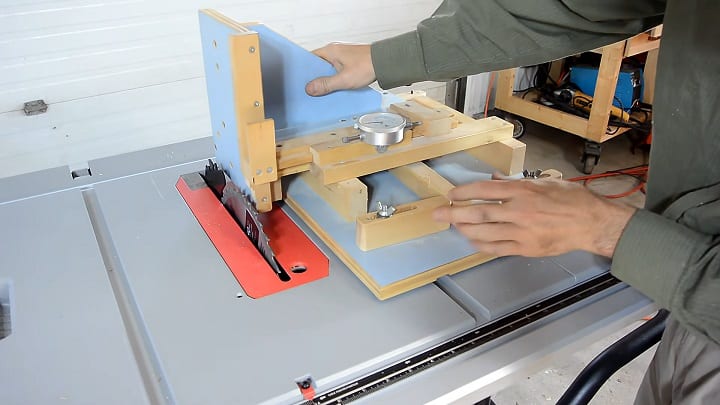Whether you buy an 8 ¼ inch or 10-inch table saw, both wood cutting tools provide great performance working on different materials.
But they come with some significant differences due to their different sizes. And for a beginner woodworker, it’s pretty challenging to choose the right one as in 8 1/4 inch vs 10 inch table saw gives a heated battle, head-to-head.

Both table saws are sturdy, lightweight, and portable and can be used on wet or frozen wood as they come with high-power motors. But apart from the blade size, they contain some other dissimilarities.
Also, the differences between the two table saws bring some variation in their operating performance. So read along to learn the differences and know which one you need for your wood project.
In this post we'll cover:
8 ¼ Inch Table Saw
In this table saw, 8 ¼ inches stands for the blade size of the table. These size blades are a bit beneficial for woodworkers; for example, the RPMs are greater in 8 ¼ inches blade than the standard one (10-inch).
The ripping capacity is pretty impressive, but you can’t cut more than 2.5 inches using this sized blade.
10 Inch Table Saw
Same as the above table saw, 10-inch is the measurement of the blade of the machine. It’s the standard blade’s size as it comes with more availability. Most of these machines can run on 110 electrical power.
Thus you can use this machine anywhere you want as long as you have access to electricity.

In-Depth Comparison Between 8 1/4 Inch vs. 10 Inch
The main dissimilarity between these two table saws is the dimension of their cutting blade. They may have similar teeth, but the different blades’ diameter creates some differences among them.
Have a quick look at the main differences between these two options.
| 8 1/4 Inch Table Saw | 10 Inch Table Saw |
| The highest cutting depth of an 8 ¼ inch blade is 2.5 inches. | The highest cutting depth of a 10-inch blade is 3.5 inches. |
| This machine provides higher RPMs at 90 degrees. | A 10-inch table saw provides lower RPMs at 90 degrees. |
| Dado blade isn’t compatible with this machine. | Dado blade is compatible. |
Here is an explained differences between these machines –
Also read: need a good table saw blade? These really make a difference!
Cutting Depth
The cutting depth of the blades relies on the blade’s diameter. Generally, it cuts wood according to its rotating radius. But the cutting depth of these two machines isn’t the same, although they rotate at a similar radius of 90 degrees.
Here the adjustment of the blade is responsible for the differences in cutting depth.
RPMs (Revolutions Per Minutes)
The blade size determines the RPMs of the table saws. In the table saw, if the blade size is smaller, it’ll provide higher RPMs. You can also decrease the power of RPMs by raising the arbor pulley size.
And this is why an 8 ¼ inch table saw can provide higher RPMs than the other one.
Dado Blade
Dado blades come in 8 inches, and to use them, you must have a table saw that’s bigger than the dado blade. And this is why the 8 ¼ inch table saw isn’t compatible with the dado blade, whereas a 10-inch table saw is.
Conclusion
You just learned the differences between an 8 1/4 inch vs 10-inch table saw. Both of these table saws are excellent for professional and DIY projects. The working performance of the machines is impressive as well and comes with a reliable safety system.
However, if you need a specific tool that gives you better cutting capacity and dado compatibility, then you should choose the 10-inch table saw. I hope all the information was helpful for you.
Also read: these are the best table saws we’ve reviewed
I'm Joost Nusselder, the founder of Tools Doctor, content marketer, and dad. I love trying out new equipment, and together with my team I've been creating in-depth blog articles since 2016 to help loyal readers with tools & crafting tips.

